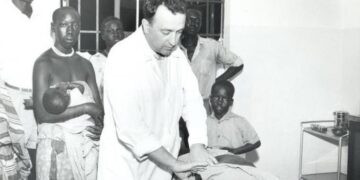Almost five years since the onset of the COVID-19 pandemic, one might assume that the virus is a thing of the past, perhaps reduced to a mild inconvenience like the common flu. However, my recent personal experience shattered that perception entirely. In late January, I attended an international meeting and within three days, the symptoms of a mysterious illness began to manifest. High-grade fever, excruciating headaches, body aches, coughing and sniffles consumed me despite taking medication. Many of the other delegates also fell ill, resulting in cancelled meetings.
Even now, I am still grappling with post-COVID viral fatigue syndrome, struggling with exhaustion in every aspect of daily life, including getting out of bed, sitting for extended durations and even talking. So, what does this mean for the ongoing battle against COVID-19? As the world grapples with the relentless pandemic, new variants continue to emerge. Among these variants, one has captured particular attention: JN.1. In this article, we will delve into the key aspects of the JN.1 variant, including its origin, transmissibility, symptoms, vaccine effectiveness and protective measures. It’s important to note that the situation is ever-evolving and it’s crucial to rely on trusted sources for the most up-to-date information.
JN.1: AN OMICRON VARIANT
JN.1 is a variant of the Omicron strain of the COVID-19 virus. It possesses a mutation that enhances its ability to attach to and infect human cells. Consequently, JN.1 has become the prevailing strain in the United States and has been identified in several other countries. Experts have expressed concerns about the potential impact of JN.1 due to its alarming transmissibility.
TRANSMISSIBILITY AND PREVALENCE
JN.1 demonstrates a high level of transmissibility, facilitating easy person-to-person spread. It has rapidly proliferated throughout the United States, contributing to a significant portion of COVID-19 cases. While the exact number of individuals infected with this variant remains unknown, it is safe to estimate that millions of people have already been affected. The virus can swiftly traverse international borders, particularly through air travel, enabling rapid global transmission within a matter of hours.
SYMPTOMS AND MISCONCEPTIONS
Although the symptoms of JN.1 closely resemble those of other COVID-19 variants, there are a few additional features to be aware of. In addition to common symptoms such as fever, cough, shortness of breath, fatigue and loss of taste or smell, joint and body aches, as well as diarrhea, have also been reported. Recognizing these symptoms is crucial and seeking medical attention promptly is advised. It is worth noting that false-negative test results can occur with any COVID-19 variant, including JN.1. Relying on a single test is insufficient to definitively rule out infection. If you suspect exposure or experience symptoms, it is advisable to consult a healthcare professional and follow their guidance.
VACCINE EFFECTIVENESS
Encouragingly, existing vaccines developed to combat new COVID-19 variants have demonstrated effectiveness against JN.1. However, it is essential to acknowledge that vaccine distribution may vary across regions. In some areas, particularly in Africa, limited access to the latest vaccines poses challenges to achieving widespread protection.
PROTECTIVE MEASURES
To safeguard oneself and others from JN.1 and other variants, it is imperative to continue practicing preventive measures. Wearing masks, especially in indoor public spaces, significantly reduces the risk of infection. Studies have indicated that if non-infected individuals wear masks, the risk of transmission can be reduced by up to 50%. Moreover, if infected individuals wear masks, the risk of transmission can be decreased to as low as 1%.
In conclusion, COVID-19 persists as new variants emerge, with JN.1 being a prominent example. Understanding its characteristics, such as transmissibility, symptoms, and vaccine effectiveness, empowers each one of us to make informed decisions and take necessary precautions. While in the Western world new vaccines are continually developed as new variants of COVID emerge, the same is not happening in poorer continents like Africa.
For countries without vaccine access, the number one way to curb the spread and impact of JN.1 and other evolving variants is masking, especially in public spaces; thus, if you fall sick with flu and cough, mask-up and stay away from the public. Let us remain vigilant in our fight against the ongoing pandemic, prioritizing public health and the well-being of our community.
















